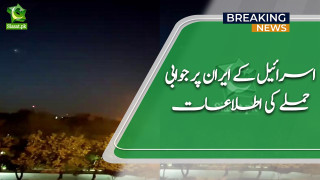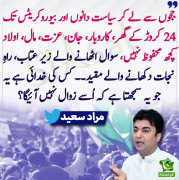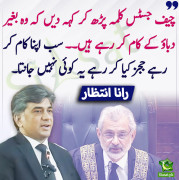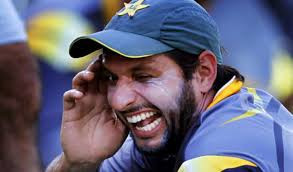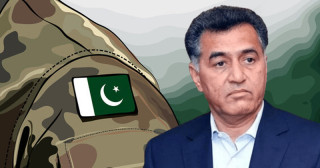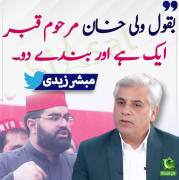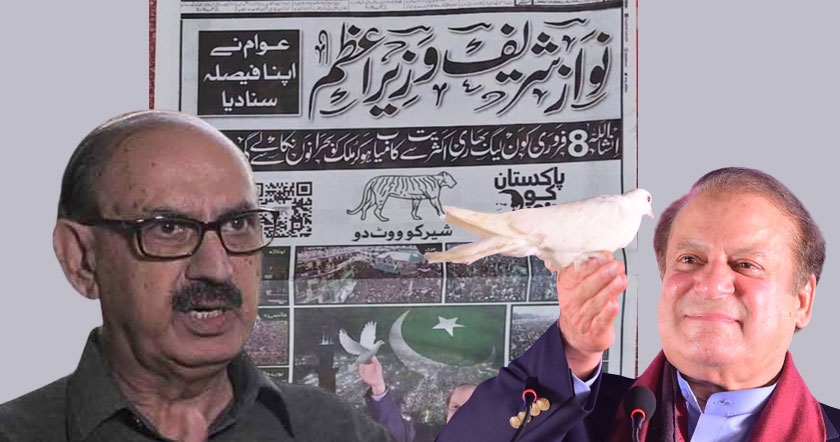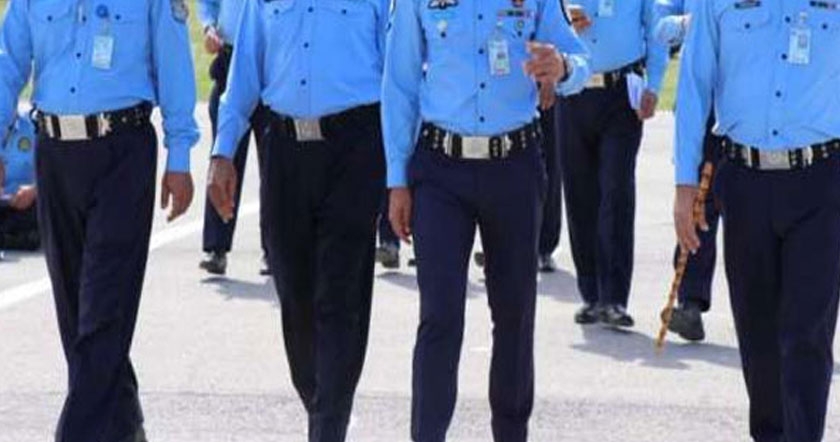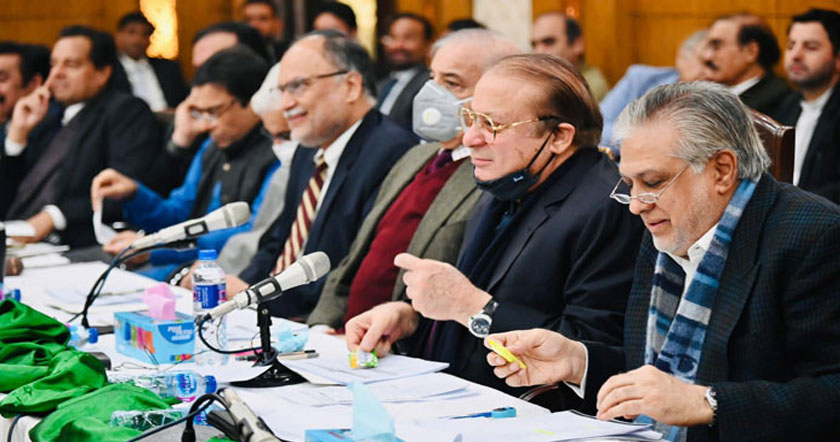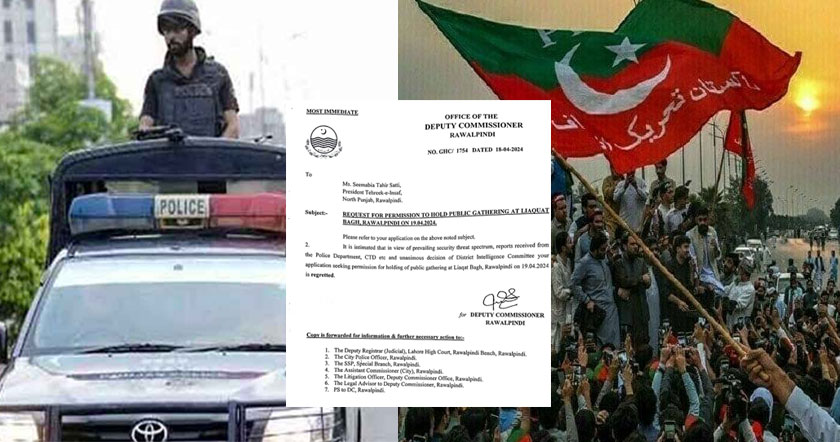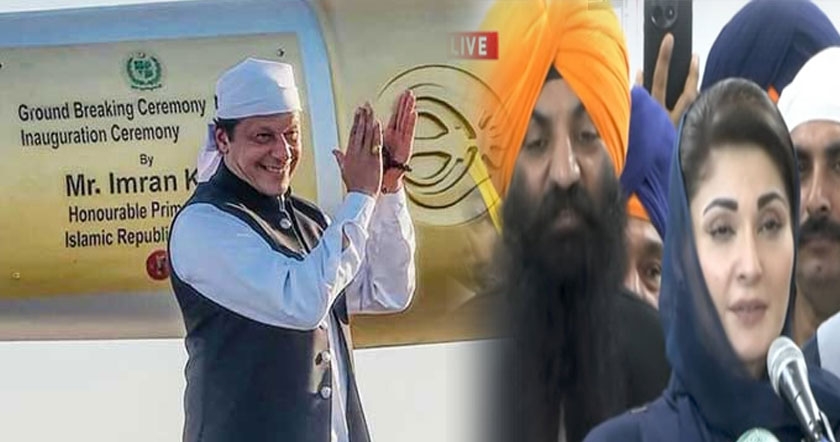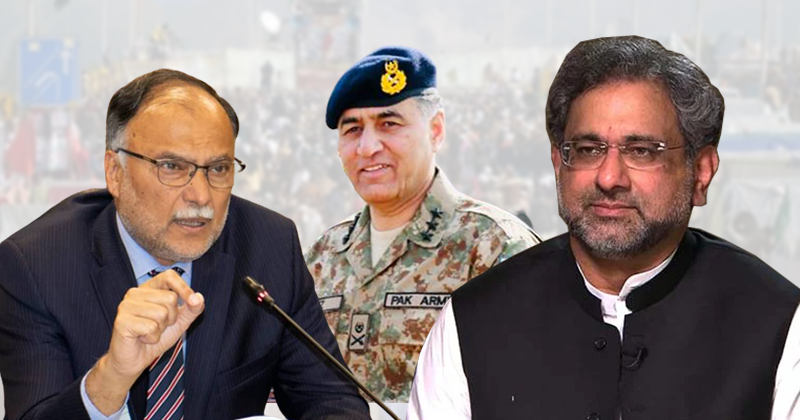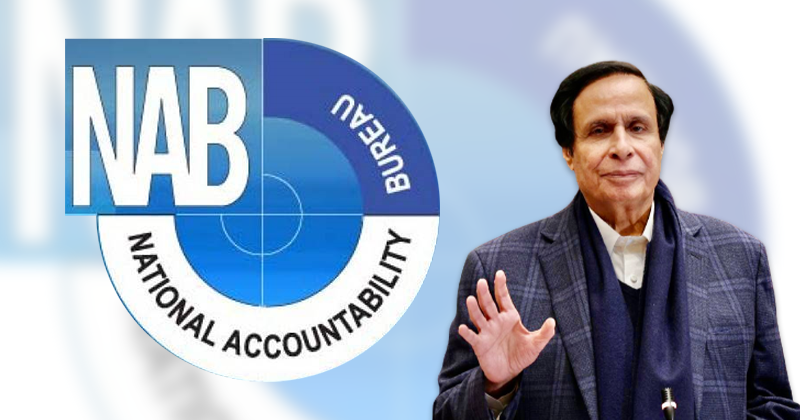"Chief of Army Staff General Raheel Sharif has reportedly kept pictures of the slain schoolchildren in the drawer of his office table so that he is reminded of the tragedy and is able to stay focused on avenging their deaths."
"One major point of criticism was the delay by the army personnel to reach the school after it was stormed by the militants on the morning of December 16. If one were to believe the army commanders, their quick reaction force had arrived at the APS in eight minutes and immediately deployed to protect the junior section as the attackers had been heard intending to move there to start killing the children. The inspector general Frontier Corps and two brigadiers, including one whose teacher wife was burnt alive as she was daringly helping the students to escape, had also rushed there within minutes."
"She came out and was the first to inform the army authorities about the assault before returning to the auditorium to be with the students even if it meant certain death."
It required painstaking efforts to get hold of the six men who facilitated the terrorist attack on the Army Public School (APS) in Peshawar on December 16, 2014.
Eight months later, the Pakistan Army authorities are in no doubt that the accused recently convicted by a military court were indeed involved in the incident as they had harboured and abetted the six suicide bombers who killed 151 persons, including 125 schoolchildren, and caused injuries to another 147.
If and when the death penalty awarded to five of the six men is implemented and the sixth one is imprisoned for life after exercising their right to file an appeal to the Military Court of Appeals, it would bring to an end one chapter of the APS tragedy. The second involves tracking down and eliminating Aurangzeb aka Khalifa Umar Mansoor and Asif aka Haji Kamran, the reported mastermind and operational commander, respectively, of the attack, and their boss, Maulana Fazlullah, the head of the outlawed Tehreek-e-Taliban Pakistan (TTP).
All three are based in Afghanistan after having fled the military action against the militants in north-western Pakistan and getting them in the neighbouring country would require time, effort and, if possible, the cooperation of the Afghan government and the US-led Nato forces stationed there.
The hunt for the three sponsors of the brutal attack will certainly continue because the APS tragedy won’t be fully avenged until they are brought to justice. The present army command tasked to accomplish this is committed to take it to its logical conclusion. Chief of Army Staff General Raheel Sharif has reportedly kept pictures of the slain schoolchildren in the drawer of his office table so that he is reminded of the tragedy and is able to stay focused on avenging their deaths. Corps Commander Peshawar, Lt Gen Hidayat ur Rahman, the simple soldier and first general from Gilgit-Baltistan who is operational commander of the action in the Federally Administered Tribal Areas (Fata) and Khyber Pakhtunkhwa, is someone who doesn’t believe in a job half-done.
A trove of information about the incident has now become available. The facilitators of the APS assault were an assorted lot pursuing different professions, but they were partners in the terror unleashed on innocent students and unarmed teachers. Among them was the peshiman of a mosque, a clerk and a rickshaw driver. They allegedly harboured the suicide bombers, provided logistical support and helped transport them to the site of the attack. It seems dwellers in the localities close to the school had seen the attackers, but were scared to share the information with the law-enforcement agencies.
The six attackers, whose pictures with the mastermind Khalifa Umar Mansoor before embarking on the suicide mission were displayed by the militants on their website, came from different areas in Fata and KP such as Bara and Tirah in Khyber Agency, Mohmand Agency and even Peshawar. All were Pashto speakers even though some of the terrorised and wounded students later told the media that they heard them speak Arabic and English.
Army-run schools, including APS Peshawar, had received threat from the militants some months before the attack, but it was dealt with normally. It apparently didn’t lead to any proper upgrading of security. Besides, the army commanders at the time were withdrawing every available soldier from different, less critical duties and sending them to North Waziristan to become part of the massive Zarb-e-Azb operation against the local and foreign militants.
There was also a sense of disbelief when the military’s Inter-Services Public Relations (ISPR) claimed that the facilitators – Hazrat Ali, Mujeebur Rehman, Sabeel, Maulvi Abdul Salam, Taj Mohammad, Atiqur Rehman, who were sentenced to death and Kifayatullah imprisoned for life – belonged to the Towheed al-Jihad group. As army officials pointed out, this wasn’t a new group as it had first claimed responsibility for a terrorist attack in Pakistan in 2012 and was known for pursuing so-called signature targets. Apparently, this group was once known as TTG or Tehreek-e-Taliban Geedar led by one Tariq Afridi. It was one of those groups that changed names and tactics to sidetrack intelligence agencies and investigators.
There was so much speculation in the aftermath of the APS incident. Some of the observations were bizarre, others were due to ignorance. The lack of patrolling by soldiers and cops in that particular Warsak Road locality were highlighted as some kind of a conspiracy. It was claimed the school canteen was run by Afghan refugees who assisted the attackers. It later turned out that the canteen contractor was a Pakistani national from Nowshera, a district which specialises in such kind of work, and is still running the canteen at the APS.
For sure the attack was a security lapse on the part of all those assigned to protect the life and property of citizens. As it was an army-run school, the army was supposed to provide security to the more than 1,800 students, both boys and girls studying in the junior and senior sections of the APS. The attackers allegedly came from the remote Tirah Valley, and thus it was the responsibility of all the soldiers, Khassadars, cops and intelligence agents manning the more than 20 roadside checkpoints to stop them from reaching the school sited in Peshawar Cantonment.
One major point of criticism was the delay by the army personnel to reach the school after it was stormed by the militants on the morning of December 16. If one were to believe the army commanders, their quick reaction force had arrived at the APS in eight minutes and immediately deployed to protect the junior section as the attackers had been heard intending to move there to start killing the children. The inspector general Frontier Corps and two brigadiers, including one whose teacher wife was burnt alive as she was daringly helping the students to escape, had also rushed there within minutes.
The modern listening facility available to the army enabled it to hear in real-time the conversation between the attackers and their masterminds based in Afghanistan on that fateful day and to piece together the bits of information about the APS tragedy. This was the evidence that the army chief and the Inter-Services Intelligence (ISI) head Lt Gen Rizwan Akhtar reportedly presented the day after the APS attack to President Ashraf Ghani in Kabul while seeking action against the masterminds operating from Afghan territory.
Some of the facilitators were apprehended the same night, including one from faraway Bahawalnagar. One arrest led to another.
There were stories of valour. The martyred school principal, Tahira Qazi, was sitting in the front row in the auditorium where an army doctor with the rank of major was lecturing the students on first-aid when the terrorist struck and fired at everyone in sight. She came out and was the first to inform the army authorities about the assault before returning to the auditorium to be with the students even if it meant certain death. Tahira Qazi was deservedly awarded a high gallantry award and so were the teachers and students who embraced martyrdom.
Naik Altaf belonged to the army’s Engineers Corps, but he defied rules and jumped two walls to race to the school to rescue the students despite being warned by soldier guards to stop or face fire. He eventually lost his life.
There were also stories of cowardice. An officer and some non-commissioned officers were dismissed from service for inaction or for running away to save their lives.
The APS tragedy was like no other. There was worldwide condemnation and heartfelt reaction to it from places far and wide. It was also a challenge for Pakistan to expose and punish the attackers. The schoolchildren’s blood united the nation in grief and resulted in a resolve to formulate the National Action Plan to root out terrorism. Identifying and punishing the facilitators of the APS attack was the first major step towards reaching the goal, but more milestones will have to be reached to restore peace and stability in Pakistan.
The writer is resident editor of The News in Peshawar.
http://www.thenews.com.pk/Todays-News-9-337372-The-APS-attackers
"One major point of criticism was the delay by the army personnel to reach the school after it was stormed by the militants on the morning of December 16. If one were to believe the army commanders, their quick reaction force had arrived at the APS in eight minutes and immediately deployed to protect the junior section as the attackers had been heard intending to move there to start killing the children. The inspector general Frontier Corps and two brigadiers, including one whose teacher wife was burnt alive as she was daringly helping the students to escape, had also rushed there within minutes."
"She came out and was the first to inform the army authorities about the assault before returning to the auditorium to be with the students even if it meant certain death."
It required painstaking efforts to get hold of the six men who facilitated the terrorist attack on the Army Public School (APS) in Peshawar on December 16, 2014.
Eight months later, the Pakistan Army authorities are in no doubt that the accused recently convicted by a military court were indeed involved in the incident as they had harboured and abetted the six suicide bombers who killed 151 persons, including 125 schoolchildren, and caused injuries to another 147.
If and when the death penalty awarded to five of the six men is implemented and the sixth one is imprisoned for life after exercising their right to file an appeal to the Military Court of Appeals, it would bring to an end one chapter of the APS tragedy. The second involves tracking down and eliminating Aurangzeb aka Khalifa Umar Mansoor and Asif aka Haji Kamran, the reported mastermind and operational commander, respectively, of the attack, and their boss, Maulana Fazlullah, the head of the outlawed Tehreek-e-Taliban Pakistan (TTP).
All three are based in Afghanistan after having fled the military action against the militants in north-western Pakistan and getting them in the neighbouring country would require time, effort and, if possible, the cooperation of the Afghan government and the US-led Nato forces stationed there.
The hunt for the three sponsors of the brutal attack will certainly continue because the APS tragedy won’t be fully avenged until they are brought to justice. The present army command tasked to accomplish this is committed to take it to its logical conclusion. Chief of Army Staff General Raheel Sharif has reportedly kept pictures of the slain schoolchildren in the drawer of his office table so that he is reminded of the tragedy and is able to stay focused on avenging their deaths. Corps Commander Peshawar, Lt Gen Hidayat ur Rahman, the simple soldier and first general from Gilgit-Baltistan who is operational commander of the action in the Federally Administered Tribal Areas (Fata) and Khyber Pakhtunkhwa, is someone who doesn’t believe in a job half-done.
A trove of information about the incident has now become available. The facilitators of the APS assault were an assorted lot pursuing different professions, but they were partners in the terror unleashed on innocent students and unarmed teachers. Among them was the peshiman of a mosque, a clerk and a rickshaw driver. They allegedly harboured the suicide bombers, provided logistical support and helped transport them to the site of the attack. It seems dwellers in the localities close to the school had seen the attackers, but were scared to share the information with the law-enforcement agencies.
The six attackers, whose pictures with the mastermind Khalifa Umar Mansoor before embarking on the suicide mission were displayed by the militants on their website, came from different areas in Fata and KP such as Bara and Tirah in Khyber Agency, Mohmand Agency and even Peshawar. All were Pashto speakers even though some of the terrorised and wounded students later told the media that they heard them speak Arabic and English.
Army-run schools, including APS Peshawar, had received threat from the militants some months before the attack, but it was dealt with normally. It apparently didn’t lead to any proper upgrading of security. Besides, the army commanders at the time were withdrawing every available soldier from different, less critical duties and sending them to North Waziristan to become part of the massive Zarb-e-Azb operation against the local and foreign militants.
There was also a sense of disbelief when the military’s Inter-Services Public Relations (ISPR) claimed that the facilitators – Hazrat Ali, Mujeebur Rehman, Sabeel, Maulvi Abdul Salam, Taj Mohammad, Atiqur Rehman, who were sentenced to death and Kifayatullah imprisoned for life – belonged to the Towheed al-Jihad group. As army officials pointed out, this wasn’t a new group as it had first claimed responsibility for a terrorist attack in Pakistan in 2012 and was known for pursuing so-called signature targets. Apparently, this group was once known as TTG or Tehreek-e-Taliban Geedar led by one Tariq Afridi. It was one of those groups that changed names and tactics to sidetrack intelligence agencies and investigators.
There was so much speculation in the aftermath of the APS incident. Some of the observations were bizarre, others were due to ignorance. The lack of patrolling by soldiers and cops in that particular Warsak Road locality were highlighted as some kind of a conspiracy. It was claimed the school canteen was run by Afghan refugees who assisted the attackers. It later turned out that the canteen contractor was a Pakistani national from Nowshera, a district which specialises in such kind of work, and is still running the canteen at the APS.
For sure the attack was a security lapse on the part of all those assigned to protect the life and property of citizens. As it was an army-run school, the army was supposed to provide security to the more than 1,800 students, both boys and girls studying in the junior and senior sections of the APS. The attackers allegedly came from the remote Tirah Valley, and thus it was the responsibility of all the soldiers, Khassadars, cops and intelligence agents manning the more than 20 roadside checkpoints to stop them from reaching the school sited in Peshawar Cantonment.
One major point of criticism was the delay by the army personnel to reach the school after it was stormed by the militants on the morning of December 16. If one were to believe the army commanders, their quick reaction force had arrived at the APS in eight minutes and immediately deployed to protect the junior section as the attackers had been heard intending to move there to start killing the children. The inspector general Frontier Corps and two brigadiers, including one whose teacher wife was burnt alive as she was daringly helping the students to escape, had also rushed there within minutes.
The modern listening facility available to the army enabled it to hear in real-time the conversation between the attackers and their masterminds based in Afghanistan on that fateful day and to piece together the bits of information about the APS tragedy. This was the evidence that the army chief and the Inter-Services Intelligence (ISI) head Lt Gen Rizwan Akhtar reportedly presented the day after the APS attack to President Ashraf Ghani in Kabul while seeking action against the masterminds operating from Afghan territory.
Some of the facilitators were apprehended the same night, including one from faraway Bahawalnagar. One arrest led to another.
There were stories of valour. The martyred school principal, Tahira Qazi, was sitting in the front row in the auditorium where an army doctor with the rank of major was lecturing the students on first-aid when the terrorist struck and fired at everyone in sight. She came out and was the first to inform the army authorities about the assault before returning to the auditorium to be with the students even if it meant certain death. Tahira Qazi was deservedly awarded a high gallantry award and so were the teachers and students who embraced martyrdom.
Naik Altaf belonged to the army’s Engineers Corps, but he defied rules and jumped two walls to race to the school to rescue the students despite being warned by soldier guards to stop or face fire. He eventually lost his life.
There were also stories of cowardice. An officer and some non-commissioned officers were dismissed from service for inaction or for running away to save their lives.
The APS tragedy was like no other. There was worldwide condemnation and heartfelt reaction to it from places far and wide. It was also a challenge for Pakistan to expose and punish the attackers. The schoolchildren’s blood united the nation in grief and resulted in a resolve to formulate the National Action Plan to root out terrorism. Identifying and punishing the facilitators of the APS attack was the first major step towards reaching the goal, but more milestones will have to be reached to restore peace and stability in Pakistan.
The writer is resident editor of The News in Peshawar.
http://www.thenews.com.pk/Todays-News-9-337372-The-APS-attackers


